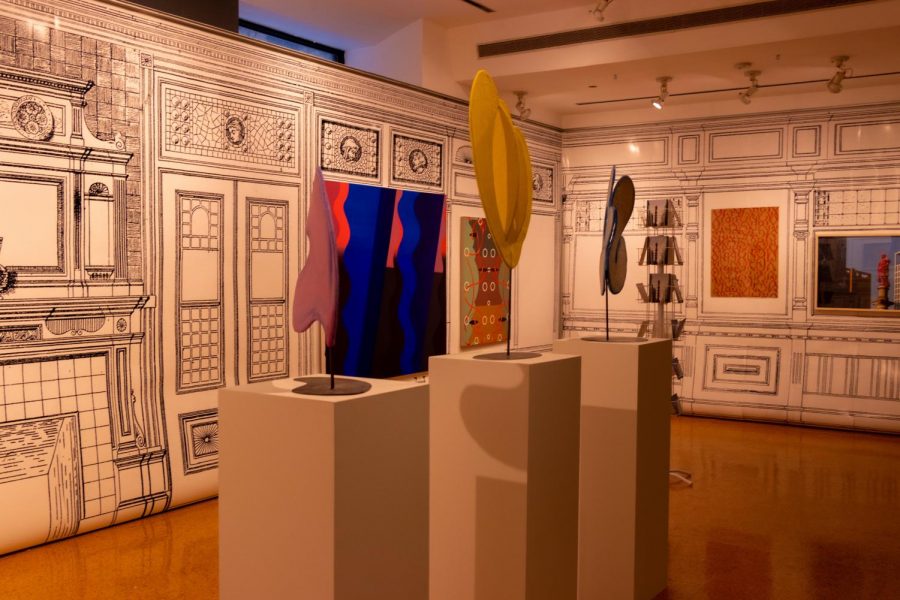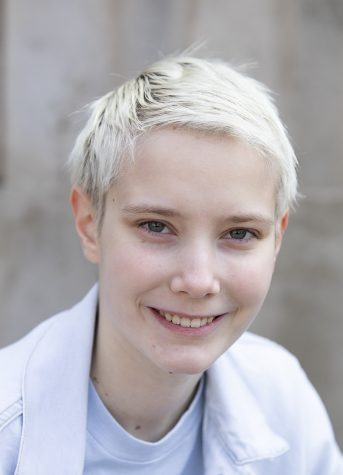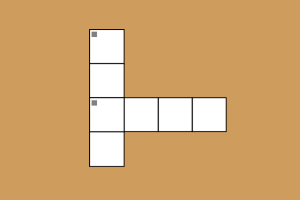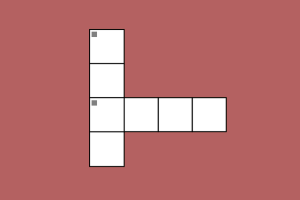Patterns Converge at Butler Gallery’s ‘Fanfare’
ANDREW DRESSNER/THE OBSERVER
Eight different artists’ styles come together in a new exhibit which explores patterns’ ability to make both a social and aesthetic statement.
February 5, 2020
On Jan. 23, the daily Fordham landscape went through a rather eye-catching and colorful change. Positioned across from the escalators that lead to the indoor plaza, Ildiko Butler Gallery now proudly hosts “Fanfare,” a group exhibition curated by Amie Cunat, which will go on through March 13. “Fanfare” focuses on patterns and their relation to art as a means of content manifestation and self-expression.
The first piece you notice when you walk in is Elizabeth Corkery’s. Her work doesn’t just hang on the gallery’s walls — it is the gallery’s walls. Her linear reconstruction of a decadent Victorian interior is firmly attached at the top, but hangs loosely at the bottom. The extra material on the floor calls attention to the space’s artificial quality, perhaps commenting on art’s power to create new realities by immersing its audiences, yet at the same time staying outside the borders of the real world.
Then, your attention is called to Joiri Minaya’s “Proposal for artistic intervention on the Columbus Statue at Columbus circle, New York, US.” Her art piece has a special ring to Fordham students who pass by the statue almost daily. Minaya refocuses attention on the statue as a controversial piece of art, and she challenges the contemporary depiction of Western colonizers as heroes by wrapping it in tropical-patterned spandex. Students and other visitors are encouraged to respond to Minaya’s artwork on postcards presented on a large stand next to the piece, the responses themselves a branch of her installation.
From Minaya, we go on to Mary Lum’s “Monoprix 1.” Lum deconstructed the French chain store’s logo and repainted it in both horizontal and vertical layers. The vertical layers are the less obvious ones, since they are created not by visible lines, but rather by the accents of cadmium red on the Os. The painting is highly dynamic, with the letters being in a peculiar dance with each other, never quite aligning in the way that our eyes are used to. If you like Jasper Jones’s work, you’ll probably enjoy this one.
Next is Rebecca Shore’s “Untitled (17-14).” The painting draws on Medieval visual structure and creates tension through symmetry and the repetition of visual elements. A bright red ribbon twists through white hoops on top of a vaselike structure. The black almondlike shapes are reminiscent of human eyes, and create an almost ominous atmosphere, reemphasized by the ribbon which makes the structure look trapped.
In “espacio vertical, tres veces, tres horas,” Beverly Acha plays with rhythm through line and color gradients. It captivates you with the many juxtapositions it contains: straight diagonals and wave-like separators, the pink’s smooth transition into dark purple and its sharp border with ultramarine.
From traditional paint-on-canvas works, you transition to Justine Hill’s abstract composition. It challenges the rectangular convention of the canvas and almost reads like a peculiar still life. Three irregularly painted shapes are positioned in conversation with each other. Two of them share a commonality of colorful geometric shape, and the other one serves both as a bridge and a point of contrast with its black-and-white scribble-like surface.
Gail Fitzgerald’s ovoidal pieces leave a particularly memorable impression. Somewhat reminiscent of Yayoi Kusama’s dotted creations, they are made from an underlying mesh structure and plaster sheets. The dots are imperfect; you can see the places where the paint has leaked. They add to the irregularity and the organic quality of the pieces, almost turning them into an extraterrestrial kind of flora.
Last but not least are Karen Tepaz’s sculptures. Installed on thin steel armatures, they look like fragile flowers. Despite their obviously hard exterior, they have a perceived lightness to them, calling to mind fluffy clouds or butterflies mid-flight. Tepaz’s fairytale creations are a satisfying completion to the exhibition, leaving a trace of soft and weightless happiness, and setting you up for the day or evening ahead.
Not only are the pieces full of patterns, they themselves create a larger pattern that is the whole exhibition. They demonstrate the endless possibilities that come with using patterns in your art, from making an astute social commentary to creating an atmospheric, out-of-this-world object. More importantly, they serve as an inspiration for us, the artists of Fordham, to find our own ways of incorporating patterns into our works, as well as provide a fresh view of looking at life for anyone who enters the small exhibition space.













